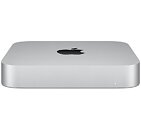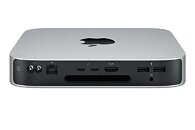And yet you can get one in a $900 mac mini. Hmmmmm.....Power and heat are clearly not an issue anymore if you can fit one in a tiny PC like this.
Moreover we've had good motherboards with 10Gb LAN before. The likes of the taichi ultimate offered a 10Gb LAN and two 1Gb LANs for $300, yet despite this we never saw the competition do that. Even now we only see 2.5Gb LAN, and not on all boards, despite the rounding error in costs for the improvement over 1Gb LAN. Oh but we'll see the expensive wifi 6 chip put on board instead with 50 billion RGBs.
Why motherboard makers will sell totally useless overbuilt VRMs and extensive heatsink designs but NOT 10Gb LAN is beyond me.
Majority of people "wants" better VRMs, and I put it in quotes because overclocking has little yield nowadays and people doesn't (which is reasonable for the masses) research what board's VRM goes well with the CPU of their choice. Building your own computer would already mean you have understanding of how to tailor cost and level of experience you'll get, and most people choose phases over 10g, or is not aware of 10g in the first place.
For most part, you CAN choose a board with 10g with decent VRM over a 2.5g with overbuilt VRM, both cost far above boards with 2.5g+decent VRM.
You can't upgrade VRM's later down the track but can totally use add-in cards to get better net controller cards than chips offered onboard.
WiFi 6 is not as expensive as 10g, they are expensive if you want to choose a board w/ it, Intel made tons of AX200's. on Taobao they go for 130yuan, thats with M.2 to pcie board, antenna's and 2 brackets. They probably cost 10$/ea for board manufacturers to order w/ intel chipset, where as new, rj45 10g card from reputable brand like intel go for 500yuan+, or you can cheaper for 10g cards taken from used server's and OEM machines. the chip itself is definitely cheaper BUT boardmakers likely also do more work on 10g boards, i.e. more pcb layers and tracing.
Consider a situation where one user bought a 10g board, connect it to another computer with 10g board/controller, and transfer only in large sequential r/w. thats not exactly everybody. you gotta wire up 1g to the router unless its an offline machine, and wire 10g to another computer, which best be close to the computer you're connecting from. Before considering OS, file sharing protocol (fuck windows), or a commercial NAS's OS, file system, drivers, the chip still runs hotter (controller chips are small, and you really would want a fan for pushing 1.25G sequential all the time)
if you think the current motherboards have extensive heatsink design... I'm assuming something like Aorus extreme, with actual finstacks. those boards are way overkill to 12, with price tag to match. Every other boards get the ye olde """fin"""stack practically plastic VRM cucker. Doesn't cost pocket change to engrave a logo or anodise it a rainbow.
coming back to "tailor experience on budget", 10g $, vrm's are not really that overbuilt for most boards, heatsink is more like a heatblocker showcase for half the board manufacturers. Apple can literally charge iShit for 1000$ so cost is not even a factor, their environment so locked down that the user probably is trying to only communicate with another 10g mac. and by the way the 10g on mac cost money and is a upgrade option. the aorus master with 10g cost 600 aud in my country. thats a 400$ (at least) motherboard before 10g.
so yea I'm not even sure if you use 10g, lest you somehow have a 10g fibre to home, from what you just said.
Great addition.
They need to finalize driver support for eGPUs via TB.
in a world where Laptop's and mini Desktops have M.2 slot on list of I/Os, and a barrel plug alongside the M.2 for PCIE power, and a Barrel plug on the GPU itself...
a guy can only ~~dream~~ despair.
I thought apple had the best TB support btw? I mean, unless M1 marks a departure of hardware compatibility (and I certainly think it is impossible to retain that compatibility perfectly), and you certainly would not get a M1 machine for gaming?









 ) but I think you needed to buy the add-in card for compatibility with Xserve
) but I think you needed to buy the add-in card for compatibility with Xserve

